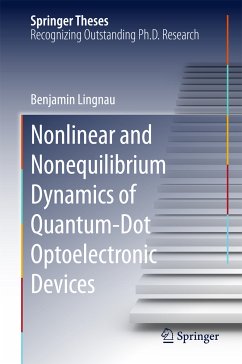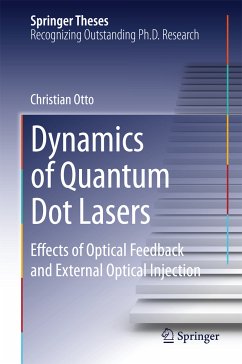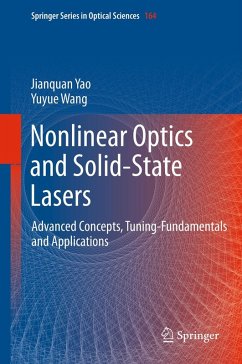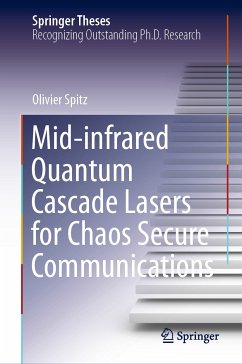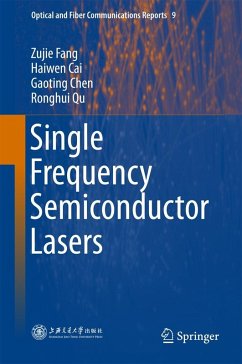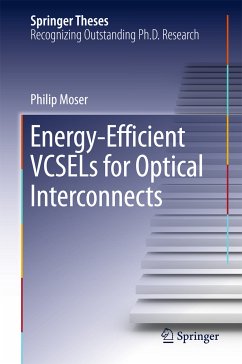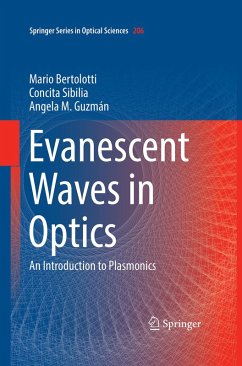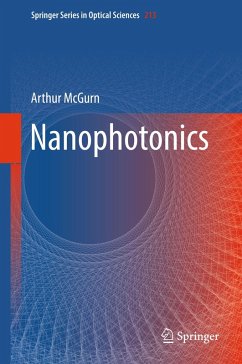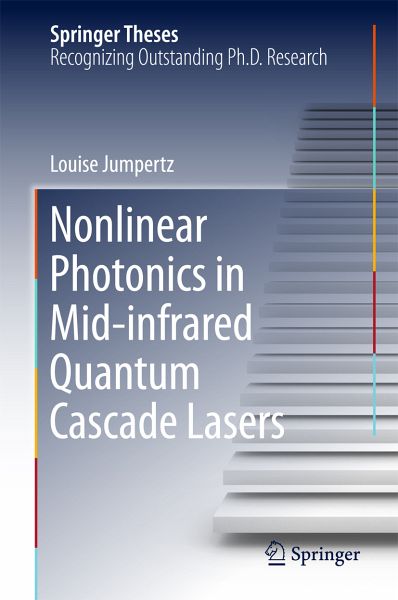
Nonlinear Photonics in Mid-infrared Quantum Cascade Lasers (eBook, PDF)
Versandkostenfrei!
Sofort per Download lieferbar
72,95 €
inkl. MwSt.
Weitere Ausgaben:

PAYBACK Punkte
36 °P sammeln!
This thesis presents the first comprehensive analysis of quantum cascade laser nonlinear dynamics and includes the first observation of a temporal chaotic behavior in quantum cascade lasers. It also provides the first analysis of optical instabilities in the mid-infrared range. Mid-infrared quantum cascade lasers are unipolar semiconductor lasers, which have become widely used in applications such as gas spectroscopy, free-space communications or optical countermeasures. Applying external perturbations such as optical feedback or optical injection leads to a strong modification of the quantum ...
This thesis presents the first comprehensive analysis of quantum cascade laser nonlinear dynamics and includes the first observation of a temporal chaotic behavior in quantum cascade lasers. It also provides the first analysis of optical instabilities in the mid-infrared range.
Mid-infrared quantum cascade lasers are unipolar semiconductor lasers, which have become widely used in applications such as gas spectroscopy, free-space communications or optical countermeasures. Applying external perturbations such as optical feedback or optical injection leads to a strong modification of the quantum cascade laser properties. Optical feedback impacts the static properties of mid-infrared Fabry-Perot and distributed feedback quantum cascade lasers, inducing power increase; threshold reduction; modification of the optical spectrum, which can become either single- or multimode; and enhanced beam quality in broad-area transverse multimode lasers. It also leads to a different dynamical behavior, and a quantum cascade laser subject to optical feedback can oscillate periodically or even become chaotic. A quantum cascade laser under external control could therefore be a source with enhanced properties for the usual mid-infrared applications, but could also address new applications such as tunable photonic oscillators, extreme events generators, chaotic Light Detection and Ranging (LIDAR), chaos-based secured communications or unpredictable countermeasures.
Mid-infrared quantum cascade lasers are unipolar semiconductor lasers, which have become widely used in applications such as gas spectroscopy, free-space communications or optical countermeasures. Applying external perturbations such as optical feedback or optical injection leads to a strong modification of the quantum cascade laser properties. Optical feedback impacts the static properties of mid-infrared Fabry-Perot and distributed feedback quantum cascade lasers, inducing power increase; threshold reduction; modification of the optical spectrum, which can become either single- or multimode; and enhanced beam quality in broad-area transverse multimode lasers. It also leads to a different dynamical behavior, and a quantum cascade laser subject to optical feedback can oscillate periodically or even become chaotic. A quantum cascade laser under external control could therefore be a source with enhanced properties for the usual mid-infrared applications, but could also address new applications such as tunable photonic oscillators, extreme events generators, chaotic Light Detection and Ranging (LIDAR), chaos-based secured communications or unpredictable countermeasures.
Dieser Download kann aus rechtlichen Gründen nur mit Rechnungsadresse in A, B, BG, CY, CZ, D, DK, EW, E, FIN, F, GR, HR, H, IRL, I, LT, L, LR, M, NL, PL, P, R, S, SLO, SK ausgeliefert werden.



